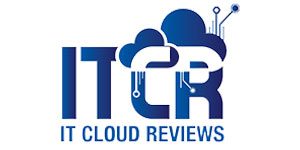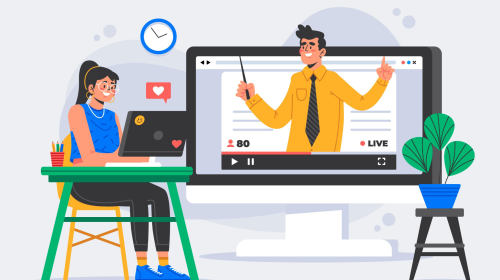Dyslexia is a common learning difficulty that affects a person’s ability to read, write, and spell. Despite its challenges, the advent of assistive technology has significantly transformed the way individuals with dyslexia learn and engage with information. This article delves into the various types of assistive technology available, their benefits, and how they can be effectively integrated into daily life and educational settings.
Table of Contents
What is Dyslexia in Assistive Technology?
Definition and Symptoms: Dyslexia is a neurological condition that impacts language processing. Individuals with dyslexia often struggle with decoding words, which can make reading and writing tasks challenging. Symptoms vary but commonly include difficulties with phonological processing, spelling, and rapid visual-verbal responding.
Impact on Learning and Daily Life: Dyslexia can affect academic performance and self-esteem. Traditional learning methods might not cater to the needs of dyslexic individuals, leading to frustration and disengagement. However, with the right support and tools, they can achieve their full potential.
Implementing Assistive Technology in Education
- Integrating Tools into the Classroom: Successful implementation requires integrating assistive technology seamlessly into the classroom environment. Teachers should be encouraged to incorporate these tools into their teaching methods and curricula.
- Training Teachers and Students: Proper training is crucial. Both teachers and students need to be familiar with the functionalities and benefits of the assistive tools to use them effectively.
- Monitoring and Evaluating Progress: Regular monitoring and evaluation help in assessing the effectiveness of the technology. Adjustments can be made based on feedback and progress, ensuring continuous improvement.
The Importance of Assistive Technology
Enhancing Learning Opportunities: Assistive technology offers tailored solutions that cater to the unique needs of dyslexic individuals. These tools can make reading, writing, and organizing information more accessible, thereby enhancing learning opportunities.
Improving Confidence and Independence: Using assistive technology can boost confidence by enabling dyslexic individuals to work more independently. These tools help bridge the gap between their potential and their performance, fostering a sense of achievement and self-reliance.
Challenges and Considerations
- Cost and Accessibility: While assistive technology can be transformative, it can also be expensive. Ensuring accessibility to these tools for all students, regardless of their financial situation, is a critical challenge.
- Keeping Up with Technological Advances: Technology evolves rapidly, and staying updated with the latest advancements can be challenging. Continuous learning and adaptation are necessary to leverage new features and improvements.
- Ensuring User-Friendliness: Assistive tools must be user-friendly to be effective. Complicated interfaces or difficult-to-navigate software can deter users from utilizing the technology to its full potential.
Types of Assistive Technology for Dyslexia
Reading Tools: Reading tools are designed to help dyslexic individuals decode and comprehend text more easily. These include text-to-speech software, audiobooks, and OCR technology.
Writing Aids: Writing aids assist with spelling, grammar, and composing text. Tools like speech-to-text software, word prediction software, and advanced spell checkers are particularly beneficial.
Organizational Software: Organizational tools help in managing tasks, scheduling, and structuring information. Digital planners, mind mapping tools, and task management apps are essential for keeping track of assignments and deadlines.
Reading Tools
- Text-to-Speech Software: Text-to-speech (TTS) software converts written text into spoken words. This technology allows dyslexic individuals to listen to content, making reading less strenuous and more comprehensible. Popular TTS tools include Kurzweil 3000 and NaturalReader.
- Audiobooks: Audiobooks provide an alternative to traditional reading. Services like Audible and Learning Ally offer extensive libraries of audiobooks, enabling users to consume literature and textbooks audibly.
- Optical Character Recognition (OCR) Technology: OCR technology scans printed text and converts it into digital text. This can then be read aloud by TTS software, making printed materials accessible to dyslexic individuals.
Writing Aids
- Speech-to-Text Software: Speech-to-text (STT) software, such as Dragon NaturallySpeaking, allows users to dictate text instead of typing. This can significantly ease the writing process for dyslexic individuals who struggle with spelling and typing.
- Word Prediction Software: Word prediction software, like Co, suggests words as the user types, reducing spelling errors and speeding up the writing process. This can be particularly helpful in writing assignments and taking notes.
- Spell Checkers and Grammar Tools: Advanced spell checkers and grammar tools, such as Grammarly, provide real-time corrections and suggestions, helping users improve their writing skills and produce error-free documents.
Organizational Software
- Digital Planners: Digital planners, like Google Calendar and Microsoft OneNote, help dyslexic individuals keep track of their schedules, assignments, and deadlines, promoting better time management and organization.
- Mind Mapping Tools: Mind mapping tools, such as MindMeister and XMind, assist in brainstorming and structuring ideas visually. This can be particularly useful for planning essays, projects, and studying.
Task Management Apps: Task management apps, like Trello and Todoist, help users break down tasks into manageable steps, set priorities, and track progress, ensuring nothing falls through the cracks.
How to Choose the Right Assistive Technology
Assessing Individual Needs: Choosing the right assistive technology begins with understanding the specific needs of the individual. Factors such as the severity of dyslexia, personal preferences, and learning environment should be considered.
Trying Out Different Tools: It’s essential to try out various tools to see which ones work best. Many software providers offer free trials or demos, allowing users to test functionalities before committing.
Consulting with Experts: Educational psychologists, speech therapists, and special education teachers can provide valuable insights and recommendations tailored to individual needs.
Case Studies
Success Stories of Students Using Assistive Technology: Many students have experienced significant improvements in their academic performance and confidence levels through the use of assistive technology. For example, a student using text-to-speech software might improve reading comprehension and enjoy learning more.
Insights from Educators: Educators who have embraced assistive technology often report a more inclusive and supportive classroom environment. They observe that students with dyslexia become more engaged and motivated.
Future Trends in Assistive Technology for Dyslexia
Advances in AI and Machine Learning: AI and machine learning are set to revolutionize assistive technology by offering more personalized and adaptive learning experiences. These advancements can provide real-time feedback and customized support.
More Personalized Learning Experiences: Future tools will likely focus on personalized learning paths, adapting to the user’s pace and style of learning. This individualized approach can enhance the effectiveness of the technology.
Expanding Accessibility Features; As awareness of dyslexia and other learning disabilities grows, more features will be developed to ensure wider accessibility. This includes multilingual support, customizable interfaces, and affordability.
Support Systems for Dyslexic Individuals
- Schools and Educational Institutions: Schools play a vital role in providing support through special education programs and access to assistive technology. Collaboration between educators and technology providers can drive better outcomes.
- Non-Profit Organizations: Non-profits like the International Dyslexia Association offer resources, training, and advocacy to support dyslexic individuals and their families.
- Online Communities and Resources: Online communities and forums provide a platform for sharing experiences, tips, and resources. Websites like Understood.org offer valuable information and support networks.
FAQs on assistive technology for dyslexia
- What is the best assistive technology for dyslexia? The best assistive technology varies depending on individual needs. Popular choices include text-to-speech software, speech-to-text tools, and organizational apps.
- How does text-to-speech software help with dyslexia? Text-to-speech software helps by converting written text into spoken words, allowing individuals to listen to content instead of reading it, which can enhance comprehension and reduce strain.
- Are there free assistive technology tools available? Yes, many free tools are available, such as Google Docs’ speech-to-text feature and various open-source OCR software. However, premium tools often offer more advanced features.
- Can assistive technology completely overcome dyslexia? While assistive technology significantly helps manage dyslexia, it doesn’t cure it. These tools aid in coping with the challenges and improving learning outcomes.
- How can parents support their dyslexic children in using assistive technology? Parents can support their children by researching and providing access to appropriate tools, encouraging their use, and collaborating with educators to integrate these technologies into the child’s learning routine.
Conclusion
Advancements in technology have become a driving force behind improving learning outcomes for students with dyslexia. Assistive technology has revolutionized the way individuals with dyslexia access information and interact with learning materials. Through innovative solutions and tailored support, assistive technology is reshaping traditional teaching methods to create inclusive and empowering environments for all learners.
The transformative power of assistive technology cannot be overstated. For individuals with dyslexia, these tools offer a pathway to more effective learning, greater independence, and improved self-esteem. By exploring and embracing the available resources, dyslexic individuals can overcome challenges and thrive in their academic and personal lives.











